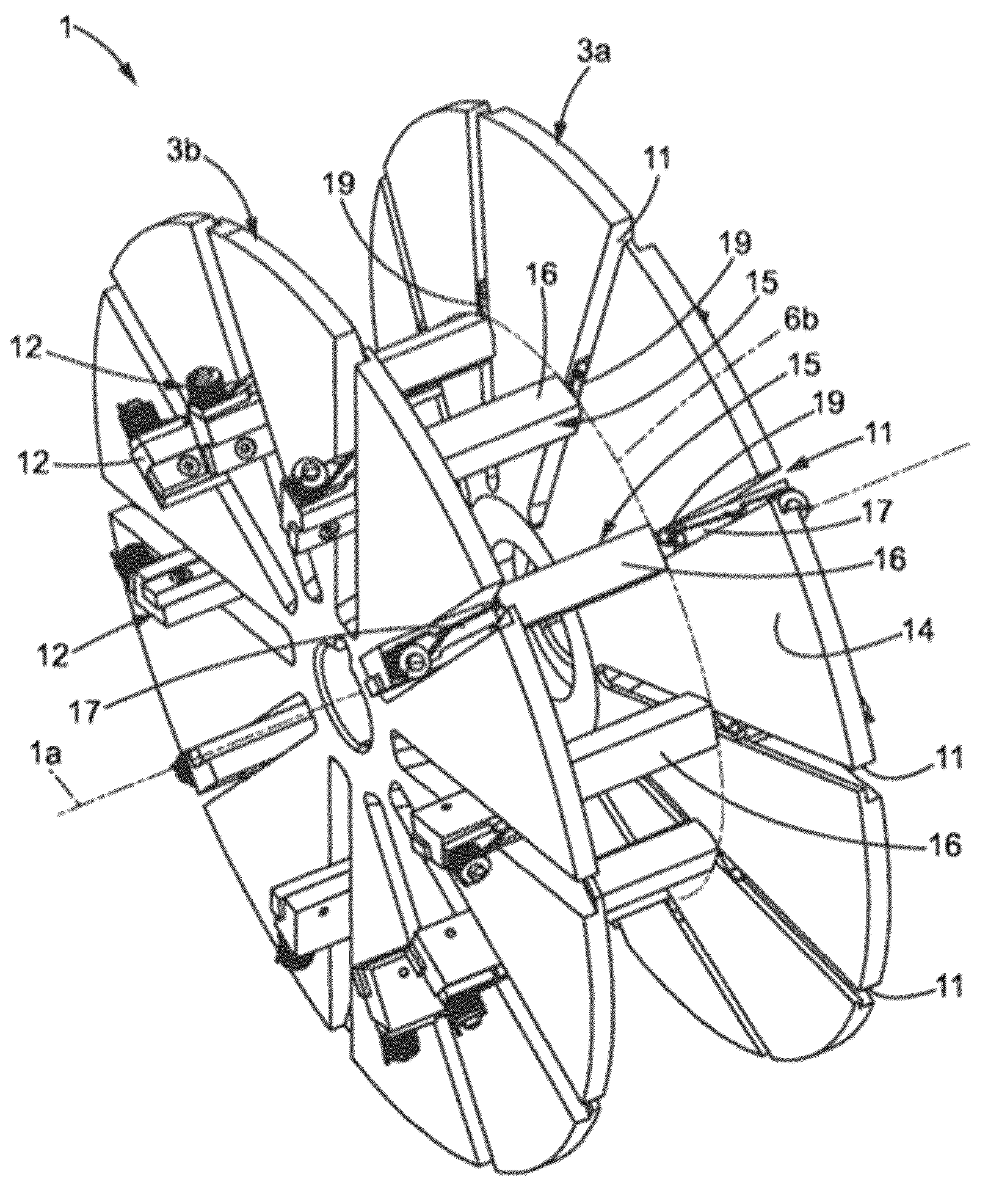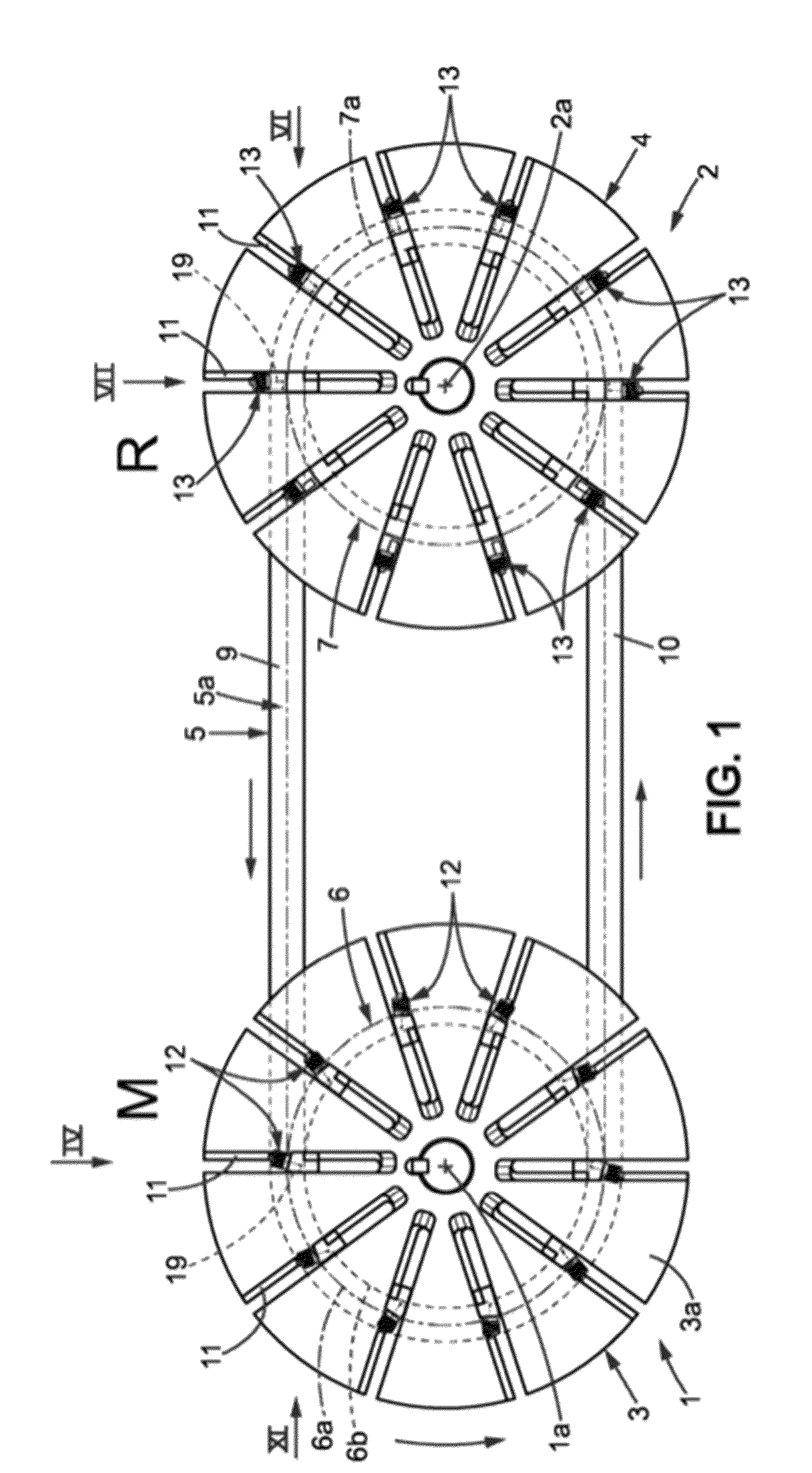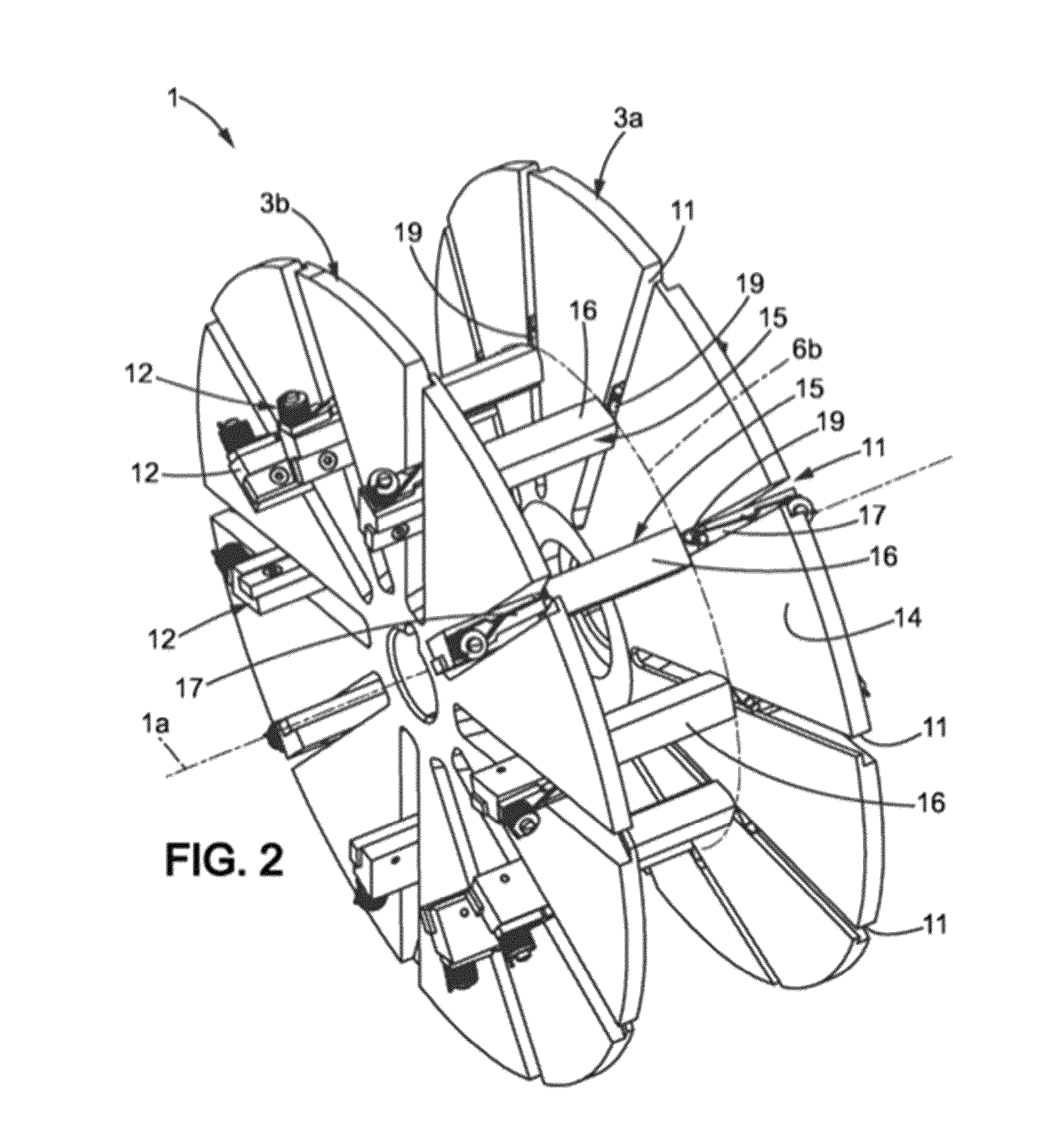Mechanism for transmitting power of rotation
a technology of mechanical power and transmission power, which is applied in the direction of gearing elements, belts/chains/gearrings, portable lifting, etc., can solve the problems of reducing the energy efficiency of transmission, limiting the torque that can be transmitted, and requiring chain stretching to achieve the adhesion of the chain to the conical surfa
- Summary
- Abstract
- Description
- Claims
- Application Information
AI Technical Summary
Benefits of technology
Problems solved by technology
Method used
Image
Examples
Embodiment Construction
[0108]Using FIGS. 1 to 13, we shall describe a first family of embodiments, in which the ability of self-locking means to self-unlock whenever said means leaves the active portion of the drive circle, exploits the fact that, whenever a link portion passes from a circular portion to an appreciably rectilinear portion of its trajectory, it is straightened. This straightening is accompanied primarily by a relative movement of said link portion with respect to the immediately upstream portion. This small relative movement is employed to unlock the locking element.
[0109]As illustrated in FIG. 1, transmission comprises a first driving rotary element, 1, and a second receiving rotary element, 2, rotationally mobile around a first driving axis, 1a, and a second receiving axis, 2a, respectively. Driving rotary element 1 comprises a pair of driving wheels, 3, and receiving rotary element 2 comprises a pair of receiving wheels, 4. The transmission also comprises a link, 5, surrounding driving ...
PUM
 Login to View More
Login to View More Abstract
Description
Claims
Application Information
 Login to View More
Login to View More - R&D
- Intellectual Property
- Life Sciences
- Materials
- Tech Scout
- Unparalleled Data Quality
- Higher Quality Content
- 60% Fewer Hallucinations
Browse by: Latest US Patents, China's latest patents, Technical Efficacy Thesaurus, Application Domain, Technology Topic, Popular Technical Reports.
© 2025 PatSnap. All rights reserved.Legal|Privacy policy|Modern Slavery Act Transparency Statement|Sitemap|About US| Contact US: help@patsnap.com



